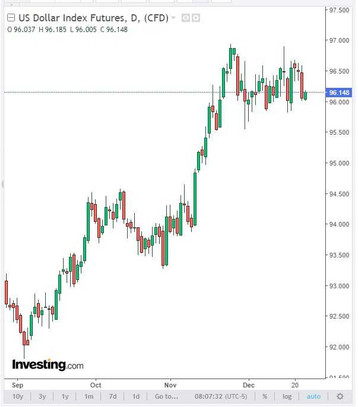Oil prices continued their recovery yesterday, bouncing off key support levels of $ 69.35 / bbl for WTI and $ 71.95 / bbl for Brent, and offsetting the recent decline caused by concerns about the spread of the omicron strain and possible measures by the authorities of various countries to introduce new quarantine restrictions. Oil prices fell on concerns that the spread of the omicron strain would negatively impact global growth and hold back oil demand.
According to the Energy Information Administration (EIA) of the US Department of Energy, published on Wednesday, oil reserves in the country's storage facilities in the reporting week fell by 4.715 million barrels (which is better than the previous value of reduction by 4.584 million barrels and the forecast of -0.031 million barrels). Some analysts of the oil market even suggested an increase in reserves by at least 3.9 million barrels, as on the eve of Tuesday evening, the American Petroleum Institute (API) reported a drop in oil reserves by 3.67 million barrels.
The decline in oil reserves is a bullish signal for prices, and they rose following the publication of such an unexpected report from the Ministry of Energy.
At the time of publication of this article, WTI crude oil futures are traded near the mark of $ 72.81 per barrel, having risen in price by 5.3% in 2 last days and having added $ +3.72 per barrel in value. Today, oil market participants will pay attention to the publication (at 18:00 GMT) of the weekly report on oil platforms from the oilfield services company Baker Hughes. It is published this time 1 day earlier than usual due to the fact that tomorrow, December 24, the Catholic world will celebrate Christmas. Financial markets in many countries and commodity markets will be closed. The trading volumes will be significantly reduced tomorrow and by the end of the year, and will recover in full only after the New Year. Previous data from Baker Hughes reflected an increase in the number of active rigs to 475 units (versus 471, 467, 461, 450, 445, 433, 428, 421, 411, 401, 394, 410, 405, 397 in previous reporting periods). It is obvious that the number of oil companies in the US is growing again, which is a negative factor for oil prices. Their next growth will also have a negative impact on oil quotes, however, it will only have a short-term character.
In general, oil market analysts believe that energy prices will maintain positive dynamics, trading above current levels, based on expectations of a cold winter amid a shortage of other energy resources, in particular natural gas, and limited oil supplies by OPEC+ countries.

The rise in oil prices was also partly due to the weakening of the dollar. DXY dollar futures are traded slightly higher today after a 3-day decline before. As of this writing, they are traded near 96.15, 10 pips above today's opening price. Many economists suggest that the pressure on the dollar may persist in the remaining few days until the end of the year, as many market participants take profits by closing long positions on the dollar. However, at the beginning of next year, USD growth is likely to resume, as the different directions of the monetary policies of the Fed and other central banks of the countries with the largest economies will come to the fore. Higher interest rates and the course for further tightening of the FRS monetary policy will provide significant support to the US dollar.
Summing up, regarding the dynamics of oil prices, there are several factors in different directions. On the one hand, prices will receive support amid rising prices for other energy sources, especially gas, and in anticipation of a cold winter in the US and Europe. On the other hand, if there is a new wave of fears about the coronavirus and a new round of slowdown in the global economy due to the introduction of lockdowns, then oil prices may come under pressure. The expectation of the dollar strengthening early next year and on the eve of the completion (in March) of the FRS quantitative easing program is also a negative factor for oil prices, since they are quoted in US dollars.





